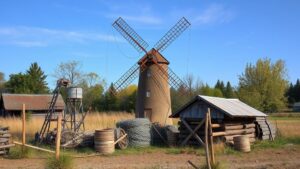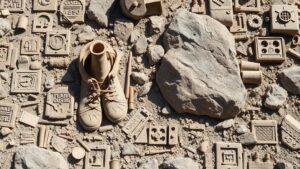Detecting for Gold and Silver Near Old Lumber Mills and Sawmills
Detecting for Gold and Silver Near Old Lumber Mills and Sawmills
The search for precious metals, particularly gold and silver, often leads enthusiasts to various historical sites. One of the most intriguing places to explore is near old lumber mills and sawmills. These locations not only serve as remnants of industrial heritage, but they also hold potential secrets for those skilled in metal detection. This article delves into the reasons behind this practice, methods of exploration, and the types of tools that can enhance the likelihood of discovery.
The Historical Context: Why Old Mills?
Old lumber mills and sawmills were bustling hubs of activity during their peak years, often situated in areas rich in natural resources. While primarily focused on timber production, many sawmills were also associated with nearby mineral deposits. During the late 19th and early 20th centuries, gold and silver booms attracted miners who often set up camp near these facilities. As a result, it’s not uncommon to find remnants of mining activity alongside abandoned sawmill sites.
Also, mills typically required transportation systems for moving timber and other goods. This infrastructure sometimes included railroads, which were also conduits for transporting ore from nearby mines. So, areas surrounding old sawmills may have higher concentrations of metal artifacts due to the overlap of industrial activities.
Understanding Metal Detection: How It Works
Metal detectors function by generating an electromagnetic field that responds to metallic objects underground. When detecting for gold and silver, devices designed to identify specific frequencies are crucial. Gold, in particular, can sometimes be challenging to detect due to its low conductivity compared to other metals, making the type of detector used pivotal.
- VLF (Very Low Frequency) – Good for detecting smaller nuggets of gold and low-conductivity targets.
- PI (Pulse Induction) – More effective in highly mineralized soils; ideal for deep detections.
For optimal results in areas previously occupied by mills, the use of advanced metal detectors that can discriminate between types of metal is recommended. This can significantly enhance the efficiency of treasure hunting efforts.
Identifying Potential Sites
When searching for old lumber mills or sawmills, historical maps and local archives serve as valuable resources. Identifying utility lines, railroads, and logging trails can also lead to more successful discoveries. Here are some strategies to identify promising sites:
- Utilizing online databases and forums dedicated to local history.
- Engaging with community historians or local mining clubs for insights.
- Examining property deed records that may shed light on past ownership and operations.
Case Studies: Successful Recoveries
A notable case occurred in Mendocino County, California, where a group of metal detectorists unearthed a cache of silver coins near the ruins of a 19th-century sawmill. These coins, dating back to the 1860s, are believed to have been lost by laborers during logging operations. This discovery highlights how laborers moved through areas not just for work, but as part of everyday life, potentially shedding light on sites where personal property was lost or discarded.
Another successful venture involved a metal detectorist in the Pacific Northwest who discovered a gold nugget weighing over one ounce near an abandoned mill. The area was previously unexamined by other treasure hunters due to the thick underbrush, but the combination of old mining trails and the mill’s history suggested a good chance for success.
Legal and Ethical Considerations
Before embarking on any search for gold or silver, it is critical to understand local laws concerning metal detecting. In most regions, detecting on private property without permission is considered trespassing. This applies especially to sites that may potentially hold archaeological significance.
- Always seek permission from landowners before exploring private lands.
- Consult local regulations regarding metal detecting in public lands or parks.
Ethics also play an important role; documenting and reporting significant finds can aid in historical preservation and contribute to community knowledge.
Actionable Takeaways
In summary, the hunt for gold and silver near old lumber mills and sawmills presents an exciting and historically rich opportunity. By utilizing the right tools, conducting thorough site research, and adhering to legal and ethical guidelines, treasure seekers can significantly improve their chances of success. Also, the findings from such expeditions can contribute to a greater understanding of local history and heritage.
As you gear up for your next treasure-hunting adventure, keep these considerations in mind:
- Research historical maps and local histories for potential sites.
- Use a metal detector suited for the type of metal you are searching for.
- Always comply with regulations and respect private property.
With preparation, knowledge, and ethical practices, detecting for gold and silver near historical sites can be not only rewarding but educational.


